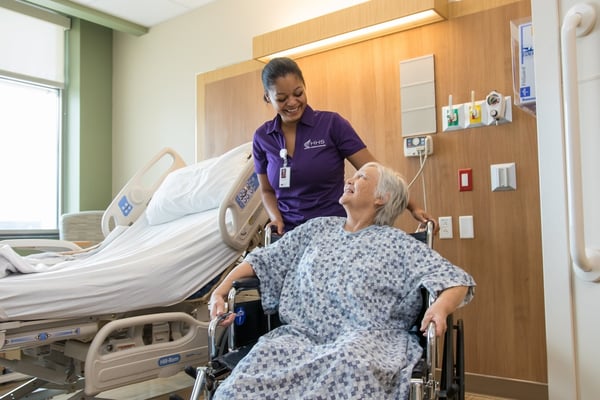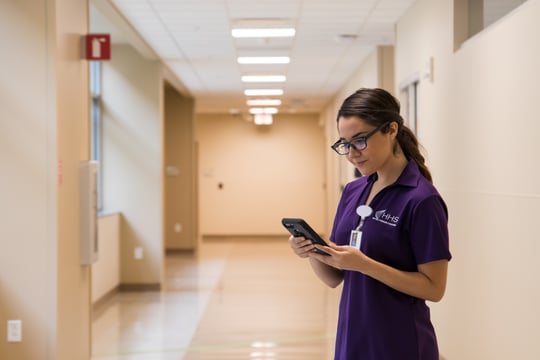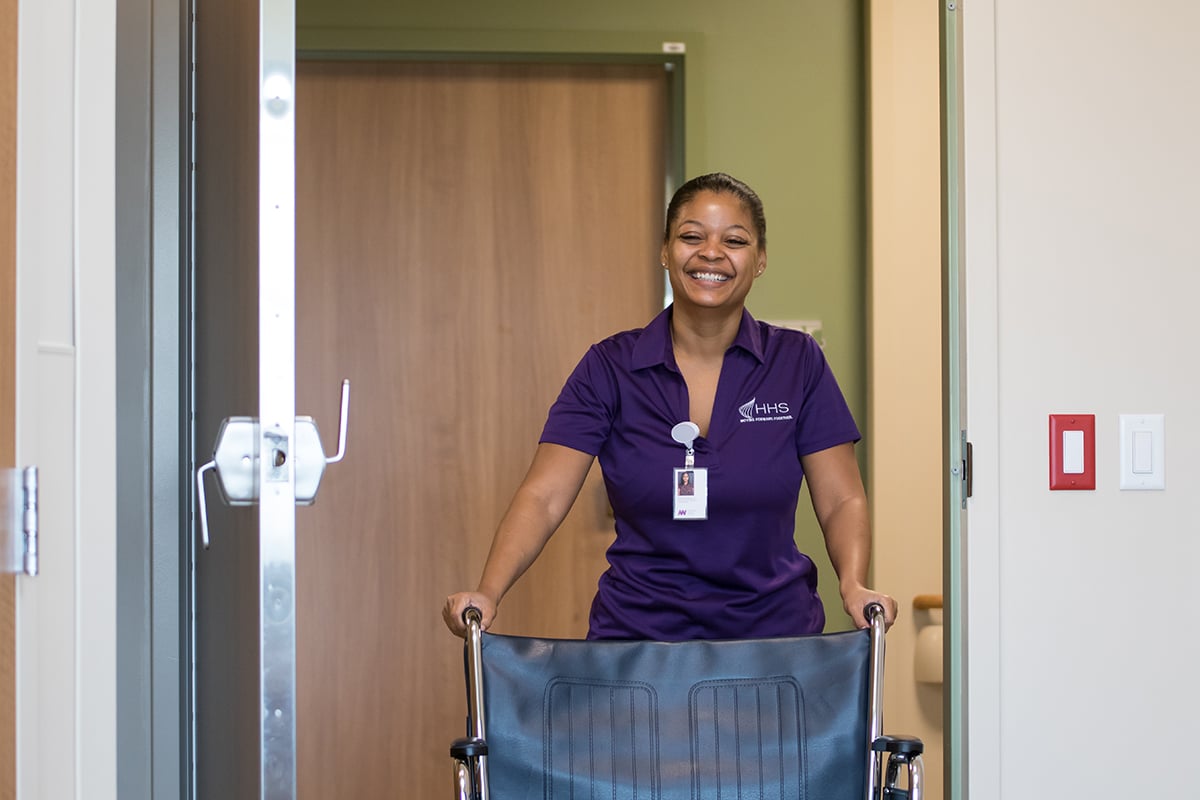Healthcare > Patient Flow
Hospital Patient Transport as a Throughput Solution
Optimize patient throughput, increase patient and clinician satisfaction, and maximize revenue through a centralized, tech-enabled patient transport department.

Our Approach
Why Patient Flow?
On average, we give nearly 7,000 hours back to nurses annually. That extra time leads to improved quality of care, better nurse-to-patient ratios, and an overall increase in patient and nursing satisfaction.

The Benefits of a Centralized Patient Transport Department
Keeping up with all the patients that need to be moved within your hospital is not easy. You have patient direct admits, discharges, patients going to and from the OR or diagnostic imaging — it's a lot!
Many hospitals put the burden of patient transport on clinicians. But that approach reduces how much time nurses spend at the bedside, leading to nursing burn-out, delays in discharges, and ultimately a loss in revenue.
HHS' Patient Flow program gives nurses more time at the bedside to focus on providing quality care. It also operates as a patient throughput solution that keeps the OR and diagnostic imaging running on schedule, reduces wait times, and maximizes revenue.

How It Works
Our patient transport model removes the strain put on clinicians and puts the focus back on patients.
Using real-time tracking technology, we can analyze discharge times and patterns to improve the efficiency of your patient flow process. This means our transporters remain productive by reducing downtime and increasing overall throughput.
We provide:
- Streamlined processes that reduce emergency department hold times and clinical overtime
- Optimized operations that reduce bottlenecks, left-without-being-seen, and left-without-treatment rates
- Benchmark data to measure progress and improve efficency

